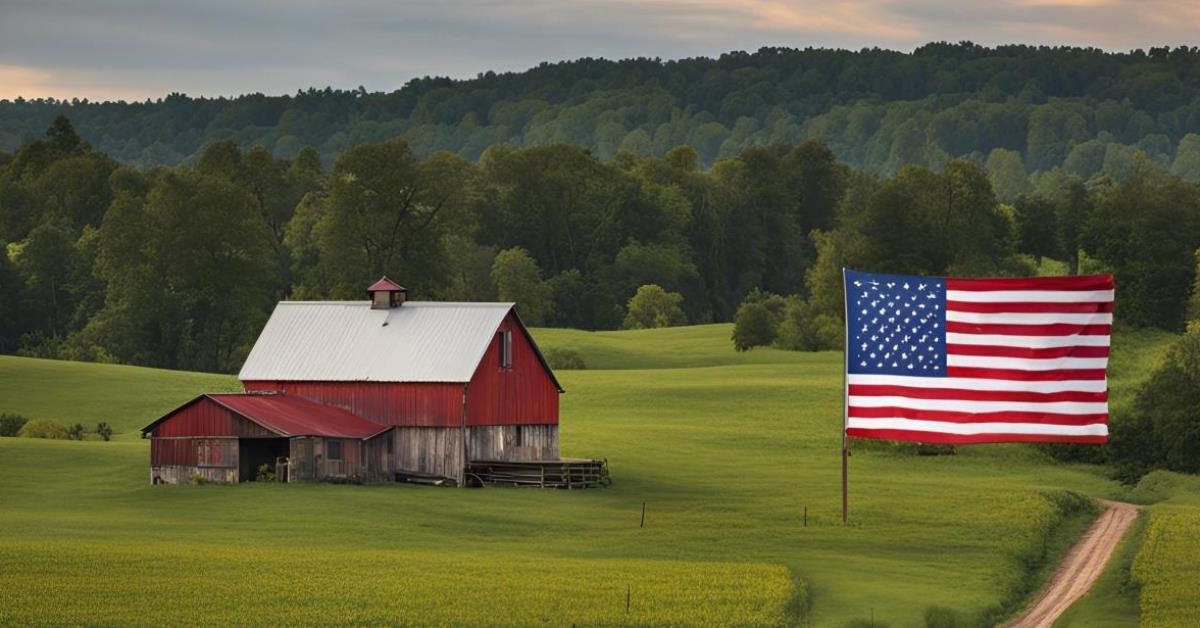| | by Sidra Jabeen | Content Manager, Paperfree Magazine |
Expedited Green Cards: Streamline Your EB-5 Visa with Rural Investments
The Surge in Rural TEA Projects: Fast-Tracking the EB-5 Visa Processlast updated Sunday, December 1, 2024
#rural eb-5 #rural tea
AD
Get Access to EB 5 Visa Investment Projects
KEY TAKEAWAYS
- Priority Processing: Rural EB-5 investments receive faster processing times for green cards.
- Lower Investment Threshold: Requires only $900,000, compared to $1.8 million for non-rural areas.
- Economic Development: Stimulates job creation and boosts economic growth in rural communities.
- Shorter Wait Times: Beneficial for investors from high-demand countries like China, India, and Vietnam.
- Strategic Investment: Identifying and investing in qualified rural projects can expedite application.
- RIA Impact: The Reauthorization Act (RIA) has significantly improved processing times for rural EB-5 petitions.
- No Waiting List: Rural TEA category currently has no waiting list, expediting the green card process.
- Professional Guidance: Seeking expert advice ensures due diligence and mitigates immigration and financial risks
The EB-5 Immigrant Investor Program has long been a pathway for investors to obtain U.S. green cards by making substantial investments in American businesses. Recently, there has been a significant focus on the rural EB-5 program, which aims to expedite the green card process while boosting economic development in rural areas.
Understanding the EB-5 Program
The EB-5 program requires investors to invest a minimum of $1.8 million in a U.S. business or $900,000 in a targeted employment area (TEA), which includes rural areas. The investment must create or preserve at least 10 full-time jobs for U.S. workers. In return, investors and their immediate families become eligible for U.S. green cards, granting them permanent residency.
The Benefits of the Rural EB-5 Program
- Priority Processing
One of the most compelling advantages of the rural EB-5 program is priority processing. Applications for rural investments are given preferential treatment, leading to faster processing times compared to urban investments. This means investors can secure their green cards more quickly. - Economic Development
Rural EB-5 investments stimulate economic growth in underserved areas. These investments bring much-needed capital to rural communities, leading to job creation and economic revitalization. - Lower Investment Threshold
The rural EB-5 program requires a lower investment threshold of $900,000, making it more accessible to a broader range of investors.
The Impact of Priority Processing
Priority processing aims to address the backlog of EB-5 applications and streamline the approval process. This initiative is particularly beneficial for investors from countries with high demand for EB-5 visas, such as China, India, and Vietnam, where wait times have been notoriously long.
Steps to Take Advantage of the Rural EB-5 Program
- Identify a Qualified Project
Investors should look for projects in designated rural areas that meet the program's criteria. These projects should have a strong business plan and job creation potential. - Engage with Regional Centers
Regional centers are entities designated by USCIS to facilitate EB-5 investments. They can provide valuable guidance and support throughout the investment process. - Submit a Comprehensive Application
A well-prepared application that meets all the requirements and demonstrates the investment's potential impact on job creation is crucial for priority processing.
For a deeper understanding of the advantages these rural TEA projects offer new investors, read more here.
Priority Processing in Practice: Rural EB-5 to Expedite Green Cards
The Surge in Rural TEA Projects
Until recently, most EB-5 investors preferred high-unemployment urban projects due to their perceived safety and wider choices. However, the EB-5 landscape has significantly transformed after the Reauthorization Act (RIA), resulting in a remarkable increase in interest among investors and developers in rural investments. This shift has led to an unprecedented surge in rural TEA (Targeted Employment Area) projects.
The primary driver behind this change is the priority processing of rural EB-5 petitions introduced by the new law. This provision allows investors to bypass the existing backlog and obtain a Green Card within months of applying, offering a considerable advantage over traditional urban investments.
How RIA Incentivizes Rural TEA Investments
The static annual supply of immigrant visas has struggled with the growing number of EB-5 applicants, particularly affecting nationals from high-demand countries like India and China. The 7% per-country cap created a bottleneck, leaving more investors waiting for visas than the yearly availability.
Even without a waiting list, processing times for all nationalities have been prolonged due to the increasing number of EB-5 petitions and processing limitations. The United States Citizenship and Immigration Services (USCIS) has faced significant operational challenges in recent years, further contributing to these delays.
As of July 2024, the USCIS webpage indicates that 80% of pre-RIA I-526 and I-526E petitions (excluding those from China) took up to 54.5 months to process in the past six months. For Chinese petitions, the wait is even longer at 90.5 months. Sustaining an investment "at risk" and exposed to the redeployment cycle for such extended periods is frustrating and detrimental to immigration plans.
The enactment of RIA has provided a solution with the "priority processing" provision for rural EB-5 petitions. USCIS will prioritize rural EB-5 petitions over other EB-5 petitions. Combined with the rural set-aside visa quota, this priority processing promises exceptionally quick approvals for rural EB-5 petitions.
There is no waiting list in the rural TEA category, so rural investors only need I-526E approval to proceed with their Green Card application.
How Effective Is Priority Processing?
The impact of priority processing has become apparent, with many post-RIA rural TEA investors receiving Form I-526E approval within a year, a timeline previously unheard of in the EB-5 context. These "new" processing times appear to be here to stay, at least for rural EB-5 investors.
Rural TEA investments present a golden opportunity for foreign nationals to obtain a Green Card quickly, especially with the availability of rural set-aside visas. However, as more rural projects enter the EB-5 market and demand increases, this category may become oversubscribed.
With recent data and unprecedented processing times (one client received a green card in just 16 months through priority processing), rural TEAs are strongly recommended for investors. Foreign nationals considering the EB-5 pathway for U.S. permanent residency should take advantage of this expedited immigration opportunity, which otherwise could take years to materialize.
Conclusion
The rural EB-5 program offers investors a unique opportunity to obtain U.S. green cards through a more expedited process while contributing to the economic development of rural areas. By taking advantage of priority processing, investors can navigate the complexities of the EB-5 program more efficiently and achieve their immigration goals sooner.
It's highly recommended that you seek professional guidance for due diligence and choose a high-quality rural EB-5 project to mitigate any immigration and financial risks. Learn more about expert consultancy here.
Source:
https://www.forbes.com/sites/forbesbusinesscouncil/2024/07/30/priority-processing-in-practice-rural-eb-5-to-expedite-green-cards/

Pages Related to #rural eb-5
- Benefits of commercial hard money loans

- The Lender Checklist: Finding a Solid Real Estate Investment

- Non institutional lenders are taking the center stage

- [closed] CMF. Cedar Multifamily Fund
![[closed] CMF. Cedar Multifamily Fund](https://d2sv4n3pfes7l9.cloudfront.net/file_paperfree_144_2020-8-21-19-57-p_pf-avatar.jpg)
- Set Aside EB-5 Visas Benefits and Advantages

- July 2025 Visa Bulletin: EB-5 Investment Visa Program Shows Positive Movement

- EB-5 for Tech Entrepreneurs: Immigration Program for Startup Founders | Paperfree

- EB-5 Regional Center Program 2027 Expiration: Secure Your Green Card Before Deadline | Renewal Updates

Popular Page
Benefits of the EB-5 Visa Program| A Comprehensive Guide
Book a Free Complimentary Call
Search within Paperfree.com
real estate investing Investment Visa USA Investment Magazine Private Real Estate Funds real estate funds
